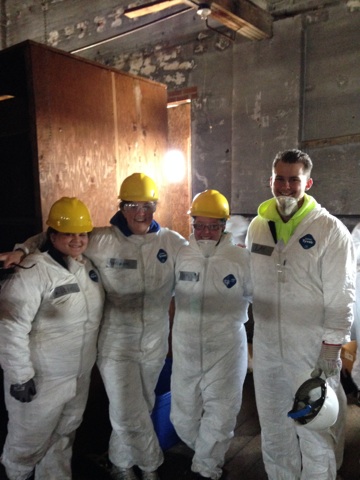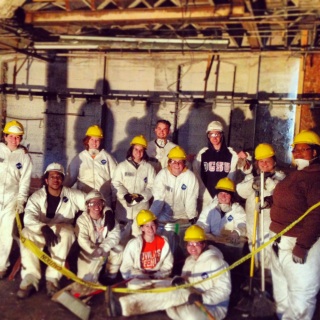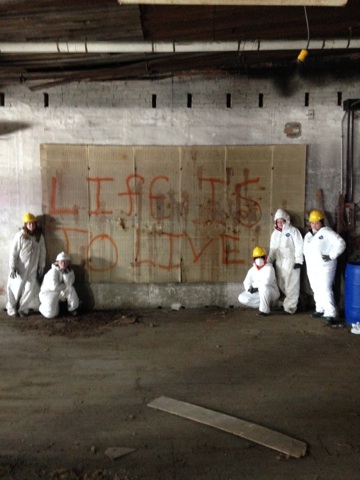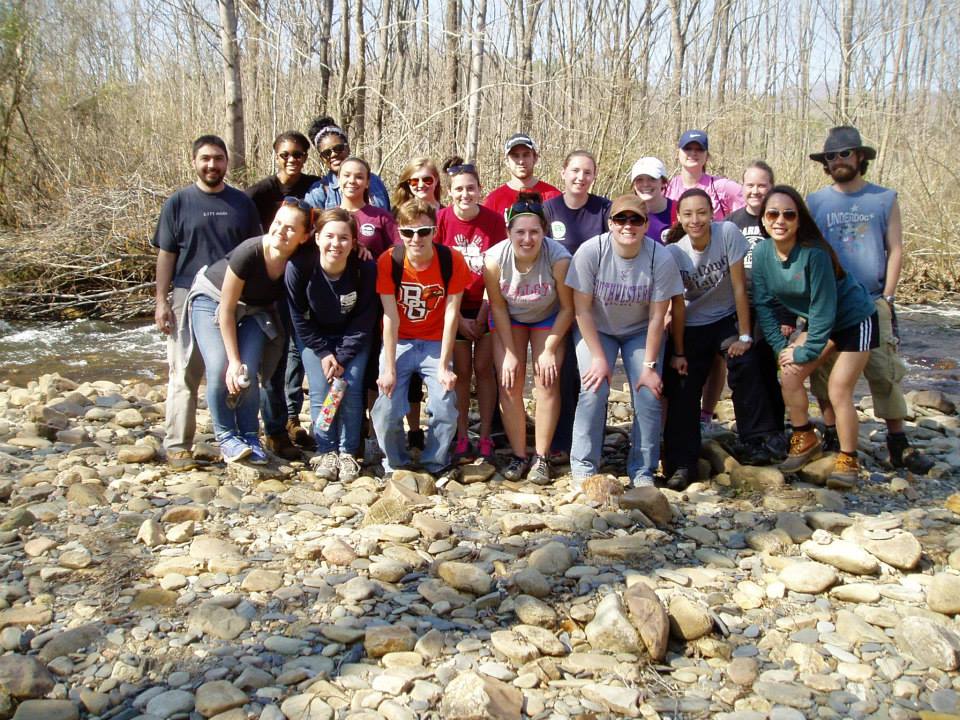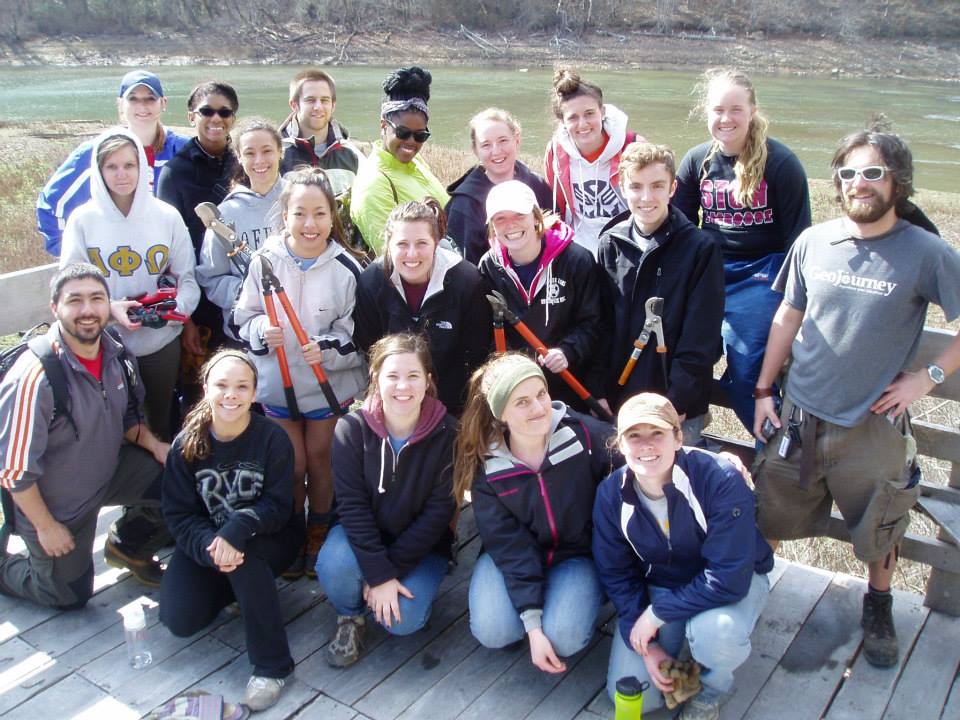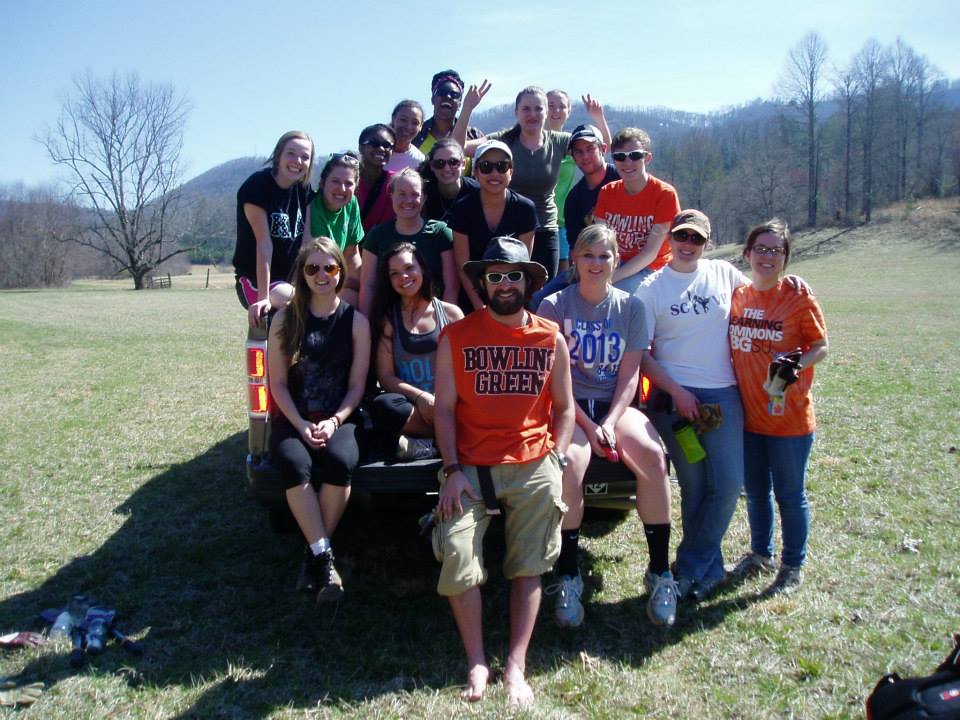Breaking away to serve
Alternative spring breaks are time for growth
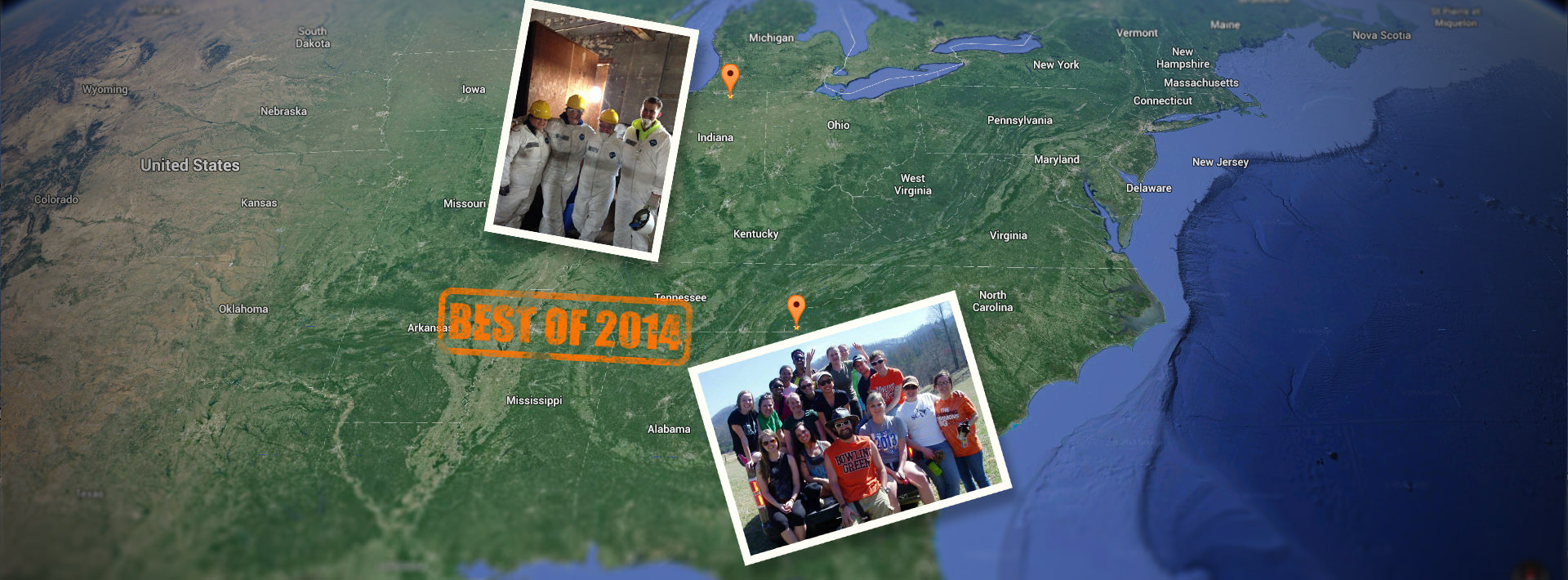
By Bonnie Blankinship
“Our aim is to work side by side with our community partners, learn their story and take it on as our own,” said sophomore Jayna Clemens before leaving on an alternative spring break trip to Goshen, Ind., to promote affordable housing and community development.
While the Goshen group donned hardhats and coveralls to renovate an old warehouse into a community art gallery, a second group of students was wading through green fields and forest floors in North Carolina fighting invasive plants. Together they contributed 1,304 hours of service.
Although the two groups of Bowling Green State University students worked in very different settings, they shared one goal: to provide direct community service based on social issues. And although they are majoring in different disciplines and are in different class years, the students share an intense commitment to helping others and learning through community engagement.
Organized through the Office of Service-Learning but led entirely by students, the two groups were part of the Bowling Green Alternative Breaks program (bGAB), which first sent a group to Detroit last fall break to address poverty and homelessness, said bGAB President Maddi Georgoff, a junior from Millbury majoring in sociology. Although she remained in Bowling Green to serve as the on-campus contact for the groups, she admitted to “feeling a bit jealous of their experience.”
Georgoff and the site leaders organized pre-trip orientation meetings to educate participants about the issues they would be addressing and post-trip discussions about advocacy for those issues in the local area. “We want to move people along the ‘active citizen spectrum’ so they make citizenship in their communities a priority and understand their potential to bring change.
“The trips have proved so successful that we will repeat all of them again next year, and we’ll add two more trips to fall break and three more to spring break,” Georgoff said. The office has worked through the national organization Breakaway to identify community partners and hopes to expand its sources next year.
Inspired by their Detroit experience, four participants signed up for the spring alternative breaks and also served as site leaders.
Clemens, a biology pre-med major from Lima, Ohio, was the site leader with Matt Henkes, a freshman from Cincinnati majoring in film production, for their group of 12 students in Goshen.
Trevor Engle, a sophomore from London, Ohio, majoring in philosophy, and Emma Hillyer, a sophomore from Toledo majoring in social work, were site leaders for the group of 14 that addressed water quality and environmental issues in the Hiwassee River watershed area of Murphy, N.C.
“We have three main goals: To understand the issues around affordable housing, be an advocate, and understand what you can do in your own community and beyond,” Clemens said before the trip. In Goshen, they worked with the local community development organization La Casa transforming the warehouse and helping the organization develop a plan to teach financial literacy that will contribute to more citizens becoming homeowners.
“La Casa is dedicated to promoting safe and affordable housing for people who otherwise wouldn’t have the chance,” Georgoff said.
"The trip was a fantastic experience for not only myself and the participants, but for the people we served as well,” said Henkes. “The people of Goshen, Ind., are inspiring people with fantastic stories, and I would not have wanted to spend my spring break any other way."
For Engle, who also has a minor in psychology, both the fall and spring alternative break trips were rewarding on a number of levels. “First, there’s an appeal to leaving your usual area and going someplace novel,” he said. “And when you’re in a novel place you’re in a heightened state of awareness, of paying attention and noticing details, so you’re more open to learning.
“That environment is very apt for thinking about what service is, why we should serve and who we should serve. I think for me, the most important thing was that it made me think about what I want to do with my life and how I’d like to serve. The reflection part of the experience was probably the major thing for most of us.”
He said the watershed experience was very different from the urban Detroit experience, even though their accommodations were actually much more luxurious. “Being in a forest, your brain reacts differently. You’re calmer and not as unfocused. Nature won’t talk to you in the conventional sense. In Detroit, it was about working directly with people, and people evoke an emotional response in you. The forest was also emotional, but you have to be more internal.”
The group worked with Tony Ward of the Hiwassee River Watershed Coalition, who taught them to identify the invasive plants and about the environmental damage they wreak on the waterways, from choking out native plants to causing erosion and allowing pollution into the water.
“It was really obvious,” Engle said. “You could see it all around.”
Students get involved in alternative breaks for varying reasons. According to Hillyer, “I initially went on the (Detroit) trip because I was trying to become involved on campus and to meet new people. As a result of the trip I gained a new appreciation of Detroit. The people are the friendliest, most prideful people you'll ever meet. I essentially became an advocate for the rehabilitation of Detroit as a result of the trip. Because of my amazing experience in Detroit, I decided to take the leadership role on the spring break trip to Murphy, N.C. The opportunity allowed me to strengthen my leadership skills while growing as an individual.
“Alternative Breaks are the most rewarding way to spend a break because you have the ability to get involved on campus, while making a difference in communities that are different from one’s own,” she added. “I plan on staying involved in the Alternative Break program for the remainder of my undergraduate career because I think that there are many other issues that I would like to see addressed.”
Engle said humorously he originally went to Detroit “because I have a good friend (Caitlin Rethorst) in the Office of Service-Learning and she told me to. I went and had a ball and I still thank her today.”
Rethorst, a veteran of many alternative break trips, is a graduate student in College Student Personnel and served as the graduate administrator for the Hiwassee trip, driving the van, keeping track of the trip accounting and providing guidance to the undergraduate site leaders.
“We had 50 students apply for 28 spots this spring,” she said.
Clemens and Henkes had both been highly involved in service-learning in high school, both from a more faith-based perspective. “I wanted to open it up to more experiences,” said Clemens, who is also a member of the President’s Leadership Academy at BGSU.
"I participated in bGAB because of the participants' alternative break experiences I witness and hear about,” said Clemens. “It's amazing to see the transformation of others and myself through direct service and reflecting upon that. Inspiring individuals to become active citizens that create positive social change is one of our goals as well as my own, and alternative breaks are part of that process. My favorite part of the trip was at our last reflection of the week, the night before departure, everyone explained how they had grown in some way that week and learned something new that broadened their outlook on life, and that's all we could ever ask for."
"BGAB was one of the best experiences I have had in college this far,” said Goshen participant Amanda Dortch, a freshman from Highland Park, Mich., majoring in journalism. “BGAB helped me to evaluate why I believe what I believe, why I value what I value, and why I am who I am. I can honestly say ‘I am because bGAB is." It also allowed me to meet incredible people on campus and off campus. La Casa opened my eyes to so many things that I can do now to improve things in my community."
Engle had one piece of advice for all students: “Go on an alternative spring break!”
Updated: 12/02/2017 12:51AM

